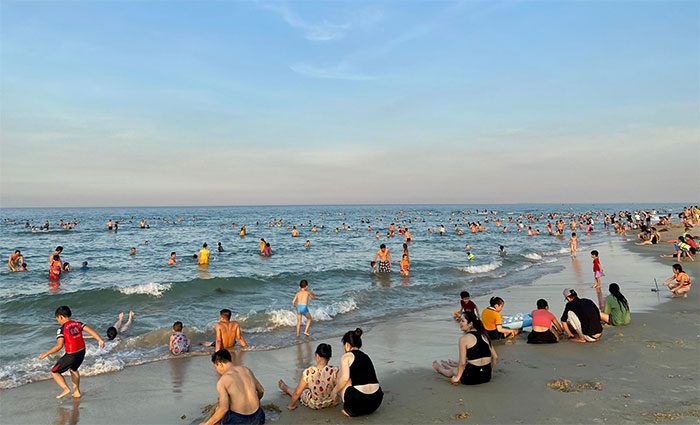During hot weather, many people tend to go swimming or take a refreshing bath, which can trigger involuntary reflexes in the body and pose a risk of death.
Many countries around the world are experiencing a summer with record high temperatures, leading the public to seek ways to cool off.
However, hot weather does not mean that the water in rivers and lakes will be warm as well, and health experts have issued several warnings related to health risks.
Although air temperatures can reach 32.2 degrees Celsius, the temperature of natural water can still be 4.4 to 10 degrees Celsius lower. Therefore, immersing our bodies in cool water can lead to a sudden drop in body temperature, which can result in various risks, even life-threatening situations.
Under such conditions, even the most skilled swimmers can be at risk of drowning.
Why is this the case?
Cold water activates involuntary reflexes in the body, causing us to gasp, which decreases the oxygen supply to the body, leading to disorientation and a lack of muscle control due to cramps.

Extreme heat can still be accompanied by cold water, posing a risk of death for swimmers.
In particular, climate change is causing more frequent and severe heatwaves, increasing the risk of fatalities in cold water areas.
The National Weather Service in Seattle (USA) stated: “We have issued a warning on social media advising people that extreme heat does not mean the water is warm, and that it poses a risk of death for swimmers and those seeking to cool off.”
For those who ignore safety measures such as wearing life jackets, suddenly jumping into cold water often causes shock, and the body will react involuntarily with gasping, cramps, etc.
This can lead to a lack of oxygen, resulting in drowning.
The water can fill your lungs, making it difficult to maintain orientation.
After about two minutes, you may begin to lose muscle control in your limbs or experience cramps, leading to drowning.
Additionally, the biggest threat during a heatwave is heat itself, which can raise body temperature to dangerous levels, causing heatstroke and potentially death.
Heatwaves can also cause a spike in fatalities that epidemiologists refer to as “injury-related deaths.”
This includes drowning, traffic-related deaths, violent behavior, or mental health crises.
Researchers from the University of Washington (USA) found that during an extreme heat event in the Pacific Northwest and Western Canada in 2021, there were 159 injury-related deaths compared to the usual numbers for that time of year in Washington.
Among those, at least four deaths were due to drowning.
Surviving with Life Jackets
In light of the frequent drownings occurring worldwide, many governments encourage citizens to wear life jackets to ensure safety.
These devices help keep our heads above water, allowing us to breathe and provide oxygen even if we experience cramps, thus minimizing the risk of death.
When swimming for 30 minutes, body temperature can drop below 35 degrees Celsius; a sudden drop in body temperature can cause cramps, and wearing flotation devices like life jackets can save your life.
Professor Kristie Ebi from the Global Health and Environmental Center at the University of Washington stated: “Most people tend to think they are safe even when they know there is a risk. We can protect ourselves while swimming in hot weather by wearing a life jacket.”
On the other hand, in any area with cold water, consider that lakes just thawed or rivers fed by melting snow can pose a risk of cold shock and drowning.
Extremely high temperatures in late spring or early summer can increase cold water drowning incidents in Canada and the northern United States, as well as in Scandinavia and the rest of Northern Europe.
In the UK, during the record heatwave of 2022, the country, which has cold coastal waters year-round, saw an increase in swimming and reported several drownings.
Professor Gordon Giesbrecht from the University of Manitoba (Canada) remarked: “Public authorities need to emphasize that a swimmer without protective gear can drown much faster due to cold shock and muscle loss from hypothermia.”
Giesbrecht advises us to enter lakes or pools gradually and keep your head out of the water. Additionally, we should avoid submerging our bodies all at once.


















































